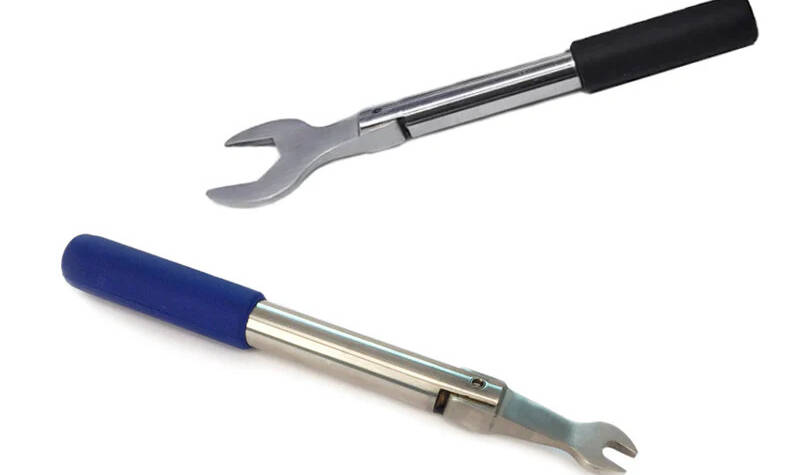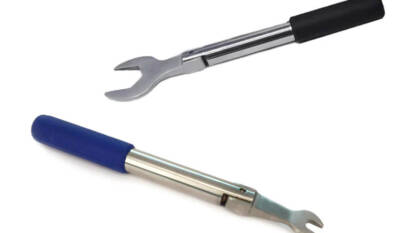
In radio frequency (RF) systems, even minor details can make a significant difference. The precision of connectors, the durability of cables, and the quality of components all directly affect performance. Two of the most essential tools and devices in this space are the SMA torch wrench and the SMA attenuator. Both play unique roles in maintaining efficiency, accuracy, and reliability in communication networks, test environments, and high-frequency applications.
Why a SMA torch wrench Matters
An SMA torch wrench is a specialized tool designed to tighten SMA connectors to the exact torque specification. Unlike ordinary wrenches, it prevents over-tightening or under-tightening, both of which can cause problems.
- Preventing Damage: SMA connectors are small and sensitive. Over-tightening can damage the connector threads or the center pin, leading to poor connections or even permanent failure.
- Consistency: Using an SMA torch wrench ensures the same torque is applied every time, giving repeatable and dependable connections.
- Signal Integrity: A loose connection can cause signal loss, increased reflections, and unreliable performance. The correct torque secures the connector firmly while keeping the RF path intact.
In testing labs, production facilities, or field installations, technicians rely on this tool to ensure their systems work as expected.
How to Use a SMA Torque Wrench Correctly
For those working with RF equipment, proper usage of the Wrench is simple but essential:
- Check the Required Torque: SMA connectors typically require approximately eight in-lbs of torque, but the exact value may vary depending on the manufacturer.
- Position the Wrench Properly: Slide it onto the connector’s nut without applying side force.
- Tighten Until Click: Many torque wrenches provide a distinct “click” sound or release mechanism when the correct torque is achieved.
- Avoid Overuse: A torque wrench should not be used as a regular wrench; it is intended for final tightening only.
By following these steps, you ensure the longevity of both the tool and the connector.
The Role of SMA Attenuators in RF Systems
While a torque wrench ensures the physical integrity of the connection, the SMA attenuator plays a different but equally critical role in signal management.
An attenuator reduces the power of a signal without distorting its waveform. This is useful in many scenarios:
- Protecting Equipment: Some receivers or test instruments are sensitive to high power levels. An attenuator ensures that incoming signals are reduced to a safe range.
- Signal Balancing: In RF networks, signals may need to be adjusted to match the levels of different devices. Attenuators allow for precise control.
- Improving Measurement Accuracy: During testing, a strong signal can overwhelm instruments. Using an SMA attenuator brings the signal into a measurable range.
These devices are compact, reliable, and designed to work seamlessly with SMA connectors, making them a standard choice in laboratories, production lines, and fieldwork.
Types of SMA Attenuators
Attenuators are available in various designs, depending on the specific application. Common types include:
- Fixed Attenuators: Provide a set amount of signal reduction, such as 3 dB, 10 dB, or 20 dB.
- Variable Attenuators: Allow adjustment across a range, offering flexibility in testing environments.
- Step Attenuators: Combine multiple fixed values that can be switched as needed.
When selecting one, it’s important to consider power handling, frequency range, and the required attenuation value.
Combining Tools for Reliable Performance
Both SMA torch wrench and SMA attenuators highlight how mechanical precision and signal control work together in RF applications.
For example, during a test setup in a lab:
- A torque wrench ensures that every connection is tightened correctly, preventing measurement errors caused by poor contact.
- An attenuator is then added to adjust the signal strength, protecting sensitive instruments.
The result is a reliable test environment where results are repeatable, accurate, and safe for equipment.
Choosing the Right Equipment
When selecting these tools, users should focus on quality and compatibility. A torque wrench must be matched to the connector size and the required torque. For attenuators, frequency range and power handling are critical. Cheap or poorly made tools often lead to inconsistent results, equipment wear, and unnecessary downtime.
Industry experts recommend working with trusted suppliers who specialize in RF solutions. Companies like Flexi RF Inc. provide carefully designed products that meet the needs of engineers, technicians, and system designers. By relying on high-quality components, you reduce the chances of costly repairs and performance failures.
Maintenance and Care
Like any precision tool, both torque wrenches and attenuators need proper care.
- Torque Wrench: Store it in a dry place, check calibration regularly, and avoid using it as a general-purpose wrench.
- Attenuators: Keep them clean, prevent exposure to moisture or dust, and always check connectors for wear before use.
Good maintenance extends the life of the tools and ensures reliable performance.
Final Thoughts
In RF systems, small mistakes can lead to big problems. A SMA torch wrench protects connectors from damage and ensures consistency, while a SMA attenuator keeps signal levels safe and manageable. Together, they are vital for engineers, technicians, and anyone working with high-frequency systems.
Investing in high-quality tools and using them correctly yields reliability, accuracy, and peace of mind. Whether in a lab, on a production floor, or in the field, these two components remain essential for anyone working with RF technology.
Consulta Holística: El equilibrio entre cuerpo, mente y espacio
En la actualidad, cada vez más personas buscan soluciones integrales para mejorar su biene…





